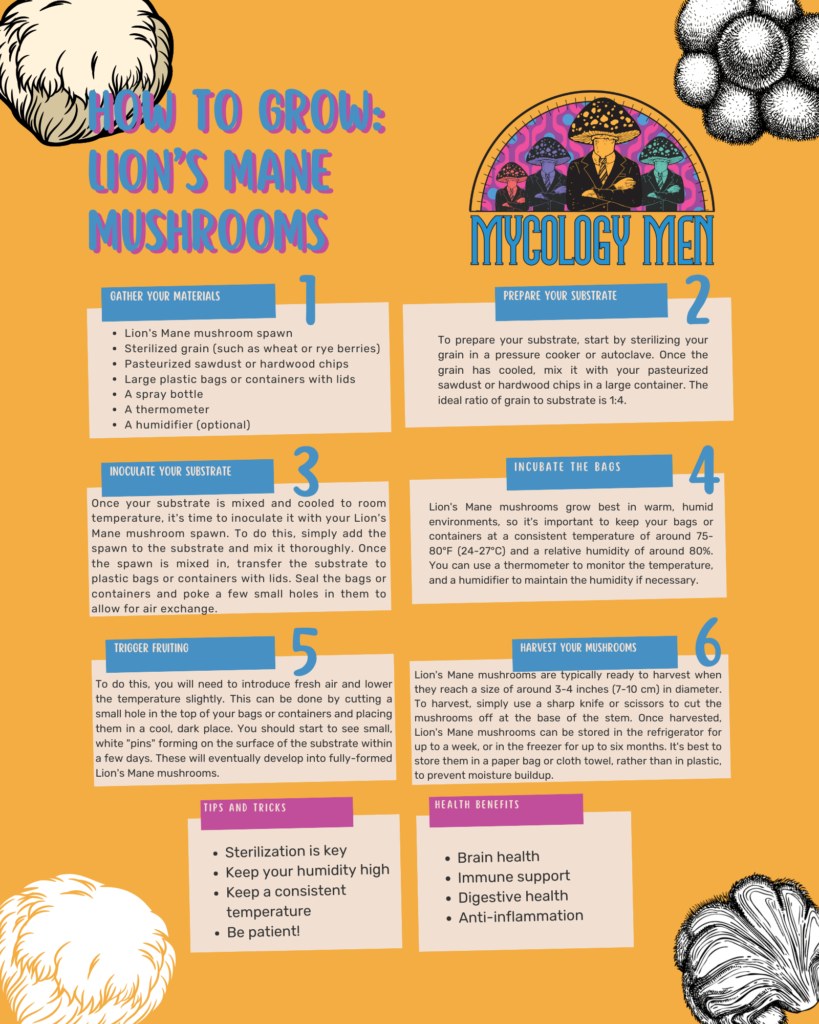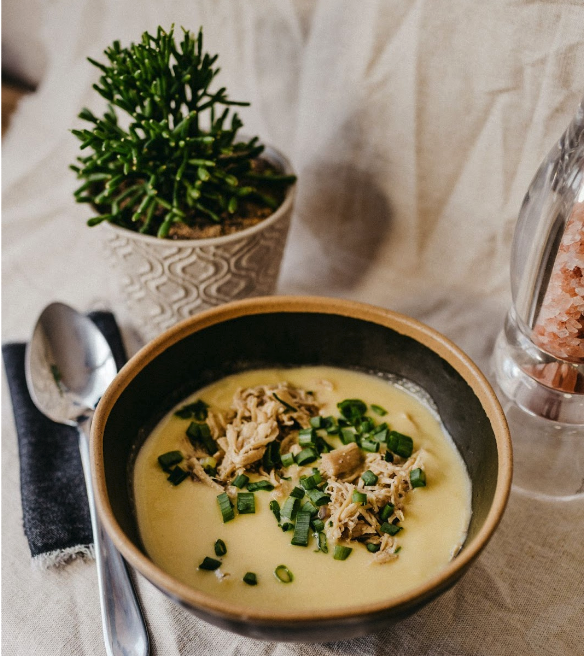Lion's Mane mushrooms, also known as Hericium erinaceus, are a delicious and nutritious type of mushroom that have gained popularity in recent years for their unique appearance and health benefits. These mushrooms have a long history of use in traditional medicine, particularly in Asia, where they are believed to have a wide range of therapeutic properties. They are also increasingly popular as a culinary ingredient, particularly in vegan and vegetarian diets, due to their meaty texture and umami flavor.
If you're interested in how to grow Lion's Mane mushrooms, you'll be pleased to know that they are relatively easy to cultivate, especially if you have experience growing other types of mushrooms. In this article, we will take a look at the steps you need to follow to learn how to grow Lion's Mane mushrooms, as well as some tips and tricks to help you get the best results.
To grow Lion's Mane mushrooms, you will need the following materials:
You can purchase Lion's Mane mushroom spawn from a variety of online retailers, as well as from some specialty mushroom suppliers. The spawn typically comes in the form of inoculated grain, which is used to start the growth of the mushrooms.
The substrate is the material on which the mushroom spawn will grow. For Lion's Mane mushrooms, you can use either sawdust or hardwood chips as your substrate. Sawdust is typically more easily accessible and easier to work with, but hardwood chips can produce a higher yield.
To prepare your substrate, start by sterilizing your grain in a pressure cooker or autoclave. Once the grain has cooled, mix it with your pasteurized sawdust or hardwood chips in a large container. The ideal ratio of grain to substrate is 1:4.
Once your substrate is mixed and cooled to room temperature, it's time to inoculate it with your Lion's Mane mushroom spawn. To do this, simply add the spawn to the substrate and mix it thoroughly.
Once the spawn is mixed in, transfer the substrate to plastic bags or containers with lids. Seal the bags or containers and poke a few small holes in them to allow for air exchange.
Lion's Mane mushrooms grow best in warm, humid environments, so it's important to keep your bags or containers at a consistent temperature of around 75-80°F (24-27°C) and a relative humidity of around 80%. You can use a thermometer to monitor the temperature, and a humidifier to maintain the humidity if necessary.
After a few days, you should start to see mycelium growth in your bags or containers. The mycelium will appear as white, web-like filaments that spread throughout the substrate.
Once the mycelium has fully colonized the substrate, it's time to trigger fruiting. To do this, you will need to introduce fresh air and lower the temperature slightly. This can be done by cutting a small hole in the top of your bags or containers and placing them in a cool, dark place.
You should start to see small, white "pins" forming on the surface of the substrate within a few days. These will eventually develop into fully-formed Lion's Mane mushrooms.
Lion's Mane mushrooms are typically ready to harvest when they reach a size of around 3-4 inches (7-10 cm) in diameter. To harvest, simply use a sharp knife or scissors to cut the mushrooms off at the base of the stem.
Once harvested, Lion's Mane mushrooms can be stored in the refrigerator for up to a week, or in the freezer for up to six months. It's best to store them in a paper bag or cloth towel, rather than in plastic, to prevent moisture buildup.

In addition to being delicious, Lion's Mane mushrooms have a range of potential health benefits. Here are just a few:

Learning how to grow Lion's Mane mushrooms is a fun and rewarding process that can yield delicious and nutritious results. With a little bit of patience, attention to detail, and the right conditions, you can produce your own crop of these unique and flavorful mushrooms. Not only are they delicious in a range of dishes, but they also offer potential health benefits that make them a valuable addition to any diet. So why not give it a try and start growing your own Lion's Mane mushrooms today?